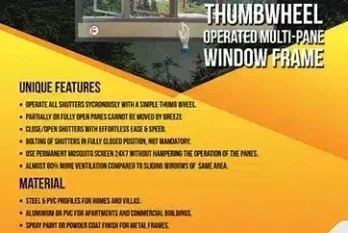Two Effective Measures Which Enable You to Increase the Energy Efficiency of a Building
Insulating profiles and spacers made from engineering plastics provide thermal separation that ensures energy efficient buildings in terms of windows, doors and façades.
With high-rise buildings in particular, architects and planners are keen on using aluminium windows. Aluminium profiles have very high execution accuracy, they enable customized design possibilities and are extremely lightweight.
In addition, aluminium as a material naturally has high chemical resistance and is mechanically resilient. The disadvantage of aluminium, however, is that it is very good at conducting heat. According to the standard DIN EN ISO 10077-2, aluminium has a thermal conductivity of ƛ = 160 W/mK. As a result, thermal separation of the aluminium profiles becomes necessary.
How Does Thermal Separation Work?
Heat is energy which by means of thermal conduction, convection and radiation, always flows in the direction of the lower temperature. The energy efficient buildings can be achieved by reducing the energy transport as follows:
• Using materials with low thermal conductivity, e.g. thermal insulating bars made from engineering plastic in the interior of the aluminium frame and thermally optimized spacers in the insulating glass.
• Designing the components in such a way that there is minimal circulation of air, for example through flags on the insulating bars or by means of insulating bars with hollow chambers in the interior of the frame.
• Using surfaces with low emissivity, e.g. a low-E film on the flags of the insulating bars in the frame.
There are two effective measures for achieving the thermal separation for energy efficient Buildings on aluminium windows, doors and façades:
Measure 1: Insulating Profiles from Engineering Plastic in the Window Frame
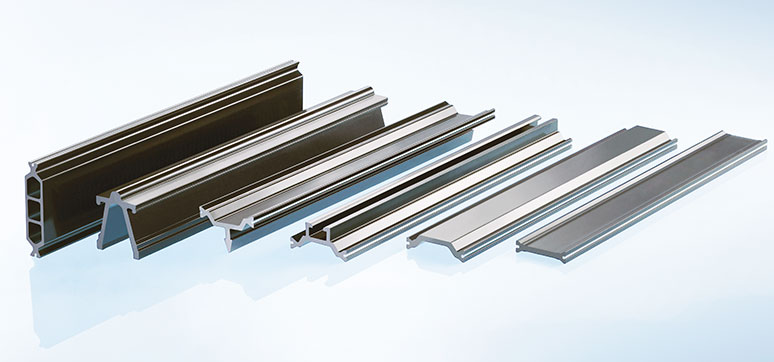
In order to reduce the thermal transmission coefficient of the frame (Uf value), it is necessary to insulate the window frames and thermally separate their outer and inner shells from each other.
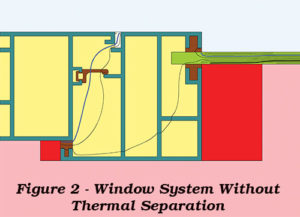
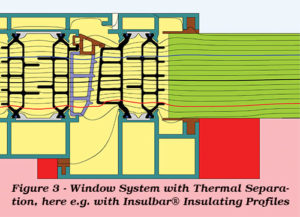
The calculation is based on the following assumptions: Glass area of 5.1 m2, frame proportion 30%, temperature difference of calculation 20 K.
This means, therefore, that the more effective the insulation, the smaller the thermal conduction (transmission), heat convection and heat radiation (see Figure 4).
Here, the individual types of heat transmission can be minimised in a targeted way. For example, a reduced heat flow can be achieved by making the hollow chambers smaller. The reduction can be brought about by means of what are called hollow chamber profiles or by means of profiles with inwardly directed flags.
Another, very effective method for minimising the losses through heat radiation is the use of thermal insulating bars with an inwardly directed flag covered with a thin low-E film. This film ensures a high level of reflection of the heat radiation.
Measure 2: Warm Edge Spacer in the Glass Edge Zone
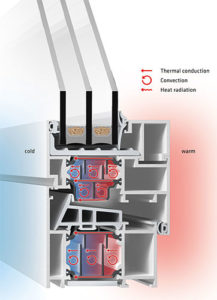
With insulating glass, it is vital to minimise thermal bridges in the glass edge zone: Spacers between the panes of glass – as part of the edge bond – are traditionally made from aluminium. They are also known by the name “Cold Edge”.
By contrast, what is known as “Warm Edge” spacers have substantially lower thermal conductivity, as a result of which heat losses at the glass edge are significantly reduced.
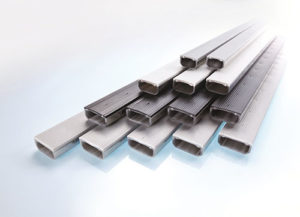
As a result, the window edge on the room side remains warmer in cool climates and cooler in warm climate zones. Warm Edge spacers consisting of a bond made from high-performance plastic and stainless steel, for example Thermix®, have a thermal conductivity that is several times lower than that of aluminium.
An ultra-thin diffusion barrier made from stainless steel ensures lasting gas-tightness. The stainless steel used by Thermix®, for example, has a thermal conductivity value that is 10 times lower than aluminium.
By using these spacers in the glass edge bond, the Uw value of the window is improved by 0.1 to 0.2 W/m2K. But it is not only the energy, CO2 and costs for heating or cooling are also reduced through the insulation.
In cooler climates, the higher surface temperature of the window also makes the building more comfortable to live in and minimises the risks of condensation and hence mould formation.
Summary :
The requirements concerning the sustainability and energy efficiency of buildings are exacting. This affects the providers of windows, façades and doors. They need better, thermally optimised products so that less heating and cooling energy escapes “out of the window”. It is vital to consistently minimise thermal bridges on windows, doors and façades. By this means, the consumption of heating and cooling energy and the associated CO2 emissions can be considerably reduced.







